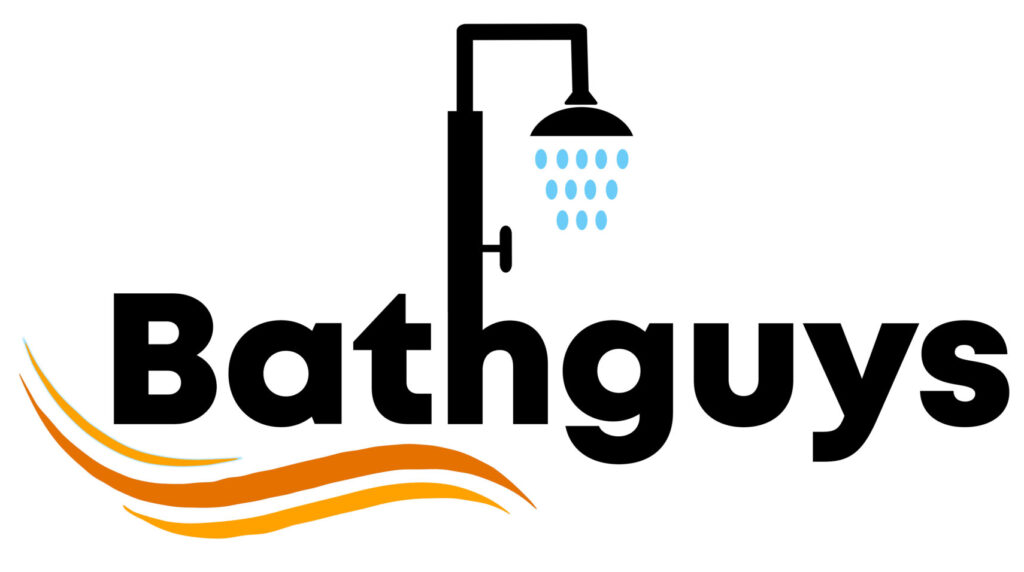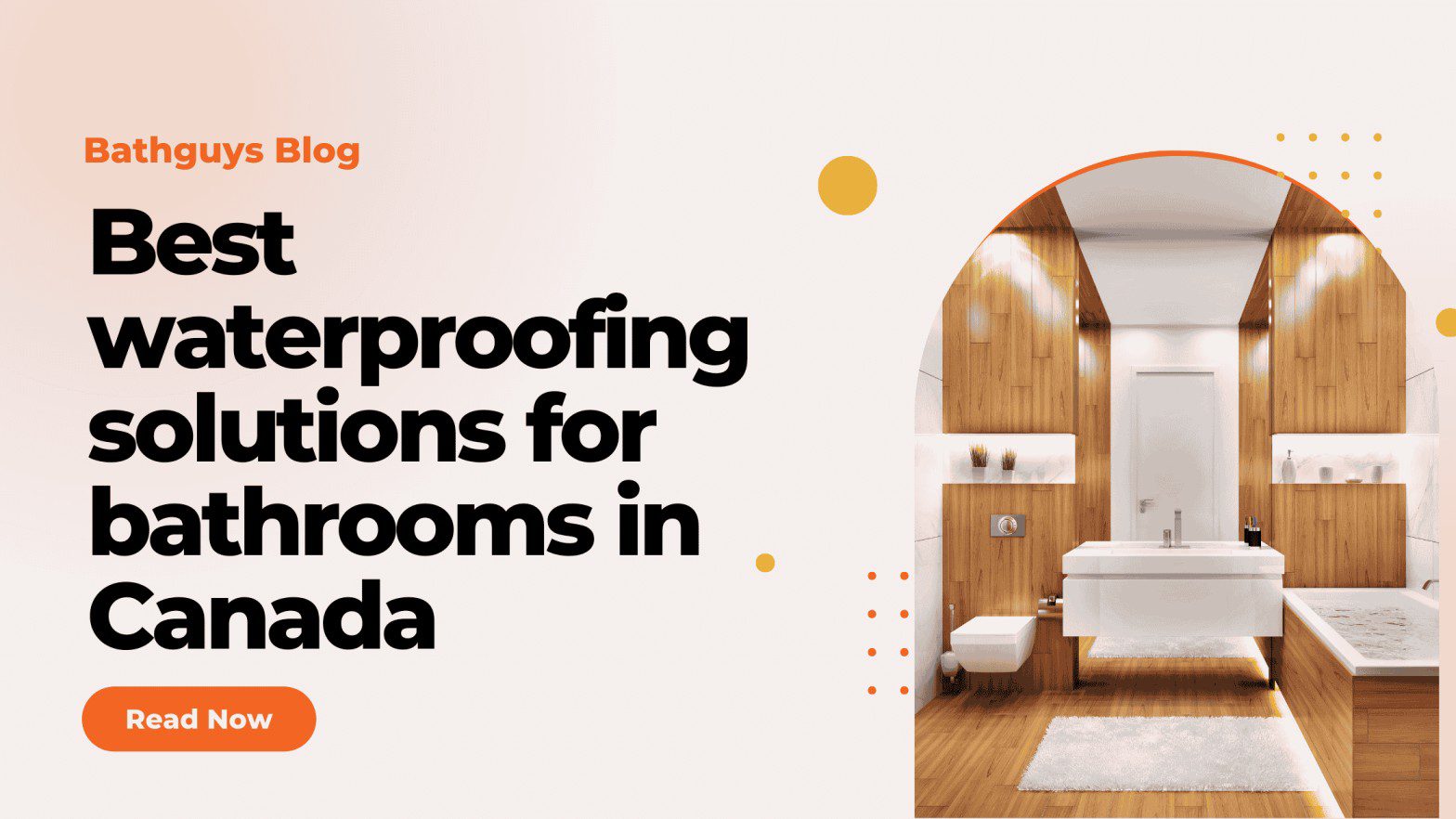Water damage is one of the biggest problems with bathrooms especially in a country like Canada where temperature and humidity is extreme. Without proper waterproofing, moisture can seep into walls and floors and cause mold growth, structural damage and costly repairs. Whether you’re renovating or building a new bathroom, choosing the right waterproofing solutions for bathrooms in Canada is key to keeping your space safe, dry and long lasting.
In this post we’ll go through the best waterproofing methods available, from liquid and sheet membranes to cement based solutions. You’ll learn how to protect different area of your bathroom, avoid common mistakes and choose the right waterproofing material for Canadian conditions.
Table of Contents
What is Bathroom Waterproofing?
Bathroom waterproofing is the process of sealing surfaces to prevent water from getting into floors, walls and other areas exposed to moisture. Without proper protection water can seep into cracks and cause mold growth, structural damage and costly repairs. In Canada where the seasons cause materials to expand and contract using the right waterproofing solutions for bathrooms in Canada is key to long term durability.
Areas Prone to Water Damage
Not all parts of a bathroom are created equal when it comes to water damage. Here are the most vulnerable areas that need waterproofing:
- Shower & Bathtub Areas: Constant water exposure makes these areas the most critical to waterproof.
- Floors & Subfloors: Even small leaks can rot floorboards or loosen tiles.
- Walls & Grout Lines: Moisture can seep through grout and cause cracks and mold to grow.
- Around Sinks & Toilets: Frequent splashes and condensation can cause water damage if not sealed properly.
By knowing these trouble spots homeowners can take proactive steps to choose the best bathroom waterproofing methods for their investment. In the next section we’ll look at the most effective waterproofing solutions in Canada.
Types of Waterproofing Solutions
Choosing the right bathroom waterproofing is key to preventing water damage and long term durability. In Canada where cold winters and humidity can damage building materials, choosing the right method makes a big difference. Here are the best bathroom waterproofing solutions out there.
1. Liquid Waterproofing Membranes
For: Shower walls, floors, and wet areas
Liquid waterproofing membranes are one of the most popular bathroom waterproofing solutions in Canada because of its ease of application and seamless finish. These coatings are applied as a liquid and forms a flexible, watertight barrier once dried.
✔ Pros:
- Forms a seamless, durable coating
- Highly resistant to cracks and leaks
- Good for irregular surfaces and tight spaces
✖ Cons:
- Requires multiple coats for maximum protection
- Needs proper drying time between applications
2. Cementitious Waterproofing
For: Concrete walls, floors, and basement bathrooms
Cementitious waterproofing is a budget friendly and durable method used in bathroom renovations in Canada. It involves applying a cement based coating that hardens to form a waterproof layer.
✔ Pros:
- Easy to apply with a brush or trowel
- Strong and long lasting especially for concrete surfaces
- Good for wet areas like basements and high moisture zones
✖ Cons:
- Less flexible than other methods
- May require additional sealing for better performance
3. Sheet Membranes
For: Shower floors, walls, and under tiles
Sheet membranes are pre-formed waterproofing layers that provides consistent protection across large areas. It’s widely used in high end bathroom renovations in Canada because of its reliability.
✔ Pros:
- Provides uniform thickness and protection
- Resistant to tears and punctures
- Long lasting and effective in wet areas
✖ Cons:
- Requires precise installation to avoid leaks
- May need professional help for best results
4. Peel-and-Stick Waterproofing Membranes
For: DIY bathroom projects, small renovations
Peel-and-stick membranes are self adhesive waterproofing sheets that’s easy to install and a quick solution for moisture control. It works well in areas like under tiles and around bathtubs.
✔ Pros:
- Simple DIY friendly installation* No drying time required
- Strong adhesive backing for a secure fit
✖ Cons:
- Surface must be properly cleaned and primed for adhesion
- Not as durable as liquid or sheet membranes for long term use
Also read: Best Bathroom Flooring Options for Canadian Homes
Which Waterproofing Solution is Best for Canadian Bathrooms?
The best bathroom waterproofing depends on your situation. For high moisture areas like showers, liquid membranes or sheet membranes are the way to go. For basement bathrooms, cementitious coatings works well. For quick and easy application, peel-and-stick membranes is the way to go.
Factors to Consider When Choosing a Waterproofing Solution
Choosing the right waterproofing solution for your bathroom is key to long term water damage protection. Since bathroom renovations in Canada have to withstand different temperatures and humidity levels, you need to choose one that fits your needs. Here are the key factors to consider.
1. Bathroom Location and Moisture Exposure
Not all bathrooms are exposed to the same level of moisture and water. For example:
- Basement bathrooms need high-moisture-resistant waterproofing, like cementitious coatings or sheet membranes.
- Main floor and upper-level bathrooms are best with liquid waterproofing membranes, which offer flexibility and durability.
- Shower areas and bathtubs require seamless waterproofing solutions, like liquid membranes or peel-and-stick sheets, to prevent leaks in high-splash zones.
2. Type of Bathroom Surfaces
Different surfaces need different waterproofing solutions:
- Concrete floors work best with cement-based waterproofing for strong adhesion.
- Tiled surfaces need a waterproofing membrane under the tiles to prevent moisture penetration.
- Wood subfloors should use flexible waterproofing solutions, like liquid membranes, to prevent cracking due to expansion and contraction.
3. Climate and Seasonal Changes in Canada
Canada’s extreme weather can affect bathroom waterproofing materials. Freezing temperatures can cause materials to expand and contract, so flexible waterproofing options like liquid membranes are better. In humid areas, mold-resistant waterproofing solutions prevent fungal growth and long term damage.
4. Durability and Lifespan
Investing in a high-quality waterproofing solution means long term protection. While sheet membranes and liquid coatings are more durable, peel-and-stick options may need to be replaced sooner. If you want a low-maintenance, long lasting solution, choose cementitious waterproofing for areas with constant water exposure.
5. Ease of Application & Installation
If you’re doing a DIY bathroom waterproofing project, peel-and-stick membranes or liquid waterproofing are easiest to apply. But for large scale renovations or complex surfaces, professional installation of sheet membranes or cementitious coatings may be needed for best results.
6. Cost and Budget
The cost of bathroom waterproofing in Canada varies:
- Liquid waterproofing membranes: Affordable and effective for most bathrooms.
- Cementitious waterproofing: Cost effective for concrete surfaces but requires proper sealing.
- Sheet membranes: More expensive but highly durable.
- Peel-and-stick membranes: Budget friendly and DIY friendly but may need to be replaced sooner.
Step-by-Step Guide to Waterproofing Your Bathroom
Proper waterproofing is key to preventing leaks, mold growth and long term damage. Whether you’re doing a DIY bathroom waterproofing or hiring a pro, following the right steps will get you a waterproof and durable bathroom. Here’s a step by step guide to help you get the best results.
Step 1: Prep the Bathroom Surface
Before applying any waterproofing product you need to prep the surface.
✔ Clean the area thoroughly—remove dust, dirt, grease and existing mold.
✔ Check for cracks or gaps—fill them with a waterproof filler or sealant.
✔ Make sure the surface is dry—moisture trapped underneath can weaken waterproofing layers.
✔ Apply a primer—a waterproof primer helps improve adhesion for membranes and coatings.
Step 2: Choose the Right Waterproofing Method
Based on your bathroom’s needs and surface type, choose the right waterproofing for bathrooms in Canada:
- Liquid Waterproofing Membranes – best for showers, wet areas and floors.
- Cementitious Waterproofing – for concrete surfaces and basement bathrooms.
- Sheet Membranes – for under tiles and large surface areas.
- Peel-and-Stick Membranes – for DIY bathroom waterproofing.
Step 3: Waterproof High Risk Areas
Some areas of the bathroom are more prone to water damage than others. Focus on sealing:
- Shower & Bathtub Walls: Apply a liquid waterproofing membrane or sheet membrane to prevent leaks.
- Bathroom Floors & Subfloors: Use waterproofing membranes under tiles to stop moisture penetration.
- Grout Lines & Tile Joints: Seal with mold-resistant waterproof grout to prevent cracks.
- Sink & Toilet Base: Apply waterproof sealant around fixtures to stop water seepage.
Step 4: Apply in Layers
✔ For Liquid Membranes: Apply 2-3 coats with a brush or roller, allow each coat to dry before applying the next.
✔ For Sheet Membranes: Cut and place them, ensure full coverage with proper overlap.
✔ For Cementitious Waterproofing: Mix according to instructions and spread evenly with a trowel.
💡 Pro Tip: Extend waterproofing at least 6 inches up the walls from the floor in wet areas.
Step 5: Wait for Drying Time
Each waterproofing product has its own drying time. Typically:
- Liquid membranes take 24-48 hours to cure.
- Cementitious coatings require at least 48 hours.
- Sheet membranes can be tiled over immediately if applied correctly.
Step 6: Test the Waterproofing
Before you tile or finish, test your bathroom waterproofing to make sure it’s working.
✔ Flood test—fill the shower base with water and leave it for 24 hours to check for leaks.
✔ Spray test—use a spray bottle to mist walls and joints, make sure no water seeps through.
Step 7: Finish with Sealants
Once the waterproofing is complete and tested:
- Apply mold-resistant grout and caulk to joints and edges.
- Use a water-repellent sealant on tiles for extra protection.
- Install proper ventilation to reduce moisture buildup and extend waterproofing life.
Common Mistakes to Avoid When Waterproofing Your Bathroom
Proper bathroom waterproofing is crucial to prevent mold, leaks and costly structural damage. But many homeowners and even contractors make common mistakes that compromise the effectiveness of waterproofing solutions. Here are the biggest pitfalls to avoid when waterproofing your bathroom in Canada.
1. Skipping Surface Preparation
One of the most common mistakes is applying a waterproofing solution on a dirty, uneven or damp surface. This can lead to poor adhesion and the waterproofing layer peels off over time.
✔ How to Avoid It:
- Clean and dry all surfaces before applying any waterproofing material.
- Fill cracks and holes with a waterproof filler to create a smooth base.
- Use a primer if recommended by the waterproofing manufacturer.
2. Using the Wrong Waterproofing Method
Not all bathroom waterproofing solutions work for every situation. Choosing the wrong method will give you inadequate protection.
✔ How to Avoid It:
- For showers and high-moisture areas: Use liquid waterproofing membranes or sheet membranes.
- For concrete floors or basements: Cementitious waterproofing works best.
- For quick DIY fixes: Peel-and-stick membranes are easy to apply but may not be as durable.
3. Ignoring Key Waterproofing Areas
Many people waterproof only visible areas, ignoring hidden spots where moisture can accumulate.
🚫 Commonly overlooked areas include:
- Corners and wall joints
- Shower and bathtub surrounds
- Floor-to-wall connections
- Around pipes, drains and fixtures
✔ How to Avoid It:
*Extend waterproofing at least 6 inches up walls and fully cover floor areas.
*Apply extra sealant around plumbing fixtures and tile joints.
4. Not Allowing Enough Drying Time
Rushing the process and not giving enough time for waterproofing materials to dry can reduce their effectiveness.
✔ How to Avoid It:
- Follow the manufacturer’s recommended drying time.
- Allow 24–48 hours for liquid membranes to cure completely before tiling.
- Avoid stepping on or installing fixtures until the waterproofing is fully set.
Also read: Best Bathroom Flooring Options for Canadian Homes
Maintenance Tips for a Waterproof Bathroom
A good bathroom waterproofing solution is essential but regular maintenance keeps it long lasting. Without proper care even the best waterproofed bathrooms can develop leaks, mold or water damage over time. Follow these simple yet effective maintenance tips to keep your bathroom waterproofing intact for years.
1. Check Seals and Grout Regularly
Grout and sealants can crack or wear away over time and let moisture seep into walls and floors.
✔ How to Do It:
- Check tile grout, caulk and silicone seals every few months.
- Repair or reapply waterproof sealant if you see any cracks.
- Use mold resistant grout to prevent fungal growth in wet areas.
2. Keep Your Bathroom Well Ventilated
Excess humidity can lead to mold, mildew and peeling waterproof layers.
✔ How to Do It:
- Install a high quality exhaust fan and run it after showers.
- Open windows and doors to let fresh air in.
- Use a dehumidifier in high moisture areas especially in winter.
3. Prevent Water Puddling
Standing water can weaken waterproof coatings and increase risk of leaks.
✔ How to Do It:
- Wipe down bathroom floors and walls after showers.
- Ensure shower drain is clear and unclogged.
- Install proper slope drainage to guide water away from sensitive areas.
4. Clean with Non Abrasive Products
Harsh chemicals can degrade bathroom waterproofing membranes and sealants.
✔ How to Do It:
- Use mild pH neutral cleaners to avoid damaging waterproof coatings.
- Avoid using bleach or ammonia based products near grout and caulk.
- Clean shower doors, walls and floors weekly to prevent soap scum buildup.
5. Address Leaks and Damp Spots Immediately
Even minor leaks can cause waterproofing failure over time.
✔ How to Do It:
- Check for damp walls, musty smell or peeling paint—these are signs of hidden leaks.
- Repair leaky faucets, showerheads and pipes as soon as possible.* If you see water damage reapply a waterproofing membrane to the affected area.
6. Refresh Waterproof Coatings Periodically
Even the best waterproofed bathrooms in Canada need regular maintenance.
✔ How to Do It:
- Reapply liquid waterproofing membrane every 3-5 years.
- Replace old caulk around tubs, sinks and showers every 1-2 years.
- Use waterproof tile sealant to maintain moisture resistance.
Conclusion
You need bathroom waterproofing solutions to prevent leaks, mold and costly repairs. By choosing the right waterproofing method, proper installation and following regular maintenance tips you can have a bathroom protected for years. Whether you go with liquid waterproofing, sheet membranes or cementitious coatings each has a role to play in creating a waterproof bathroom. Avoid common mistakes and use quality materials and you’ll have added durability. If unsure what to do, hire a bathroom waterproofing service in Canada and save time and get long lasting results. A waterproofed bathroom not only improves functionality but also increases your home’s value.
Frequently Asked Questions (FAQs)
-
What is the best waterproofing solution for bathrooms in Canada?
The best bathroom waterproofing solution depends on your specific needs. Liquid waterproofing membranes are great for showers and walls, while sheet membranes offer superior protection for high-moisture areas. Cementitious coatings work well for concrete floors. Choosing the right method ensures durability and prevents water damage.
-
How long does waterproofing last in a bathroom?
A well-applied bathroom waterproofing system can last 10 to 15 years or more, depending on the materials used and maintenance practices. Regularly inspecting seals, grout, and ventilation can help extend its lifespan and prevent early wear.
-
Can I waterproof my bathroom myself, or should I hire a professional?
DIY waterproofing is possible for minor applications, but for long-lasting protection, hiring a professional waterproofing service is recommended. Experts ensure proper surface preparation, correct application, and high-quality materials, reducing the risk of future leaks.
-
How can I tell if my bathroom waterproofing is failing?
Signs of failing waterproofing include peeling paint, mold growth, musty odors, damp walls, and loose tiles. If you notice these issues, it’s crucial to reapply waterproof coatings or seek professional help to prevent structural damage.
-
What areas of the bathroom need waterproofing the most?
Key areas that require waterproofing include shower walls and floors, bathtub surrounds, corners, seams, and areas around sinks and drains. Ensuring proper coverage in these areas prevents moisture penetration and extends the lifespan of your bathroom.
-
Does waterproofing increase the value of a home?
Yes! A properly waterproofed bathroom enhances a home’s value by preventing costly repairs, improving durability, and creating a more hygienic living space. Buyers prefer homes with well-maintained waterproofing, making it a smart investment.





